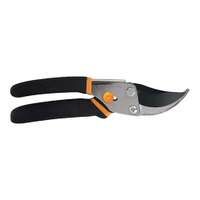When to cut back phlox – how to decide between doing the task in fall or spring
The timing can depend on both the climate and your garden goals
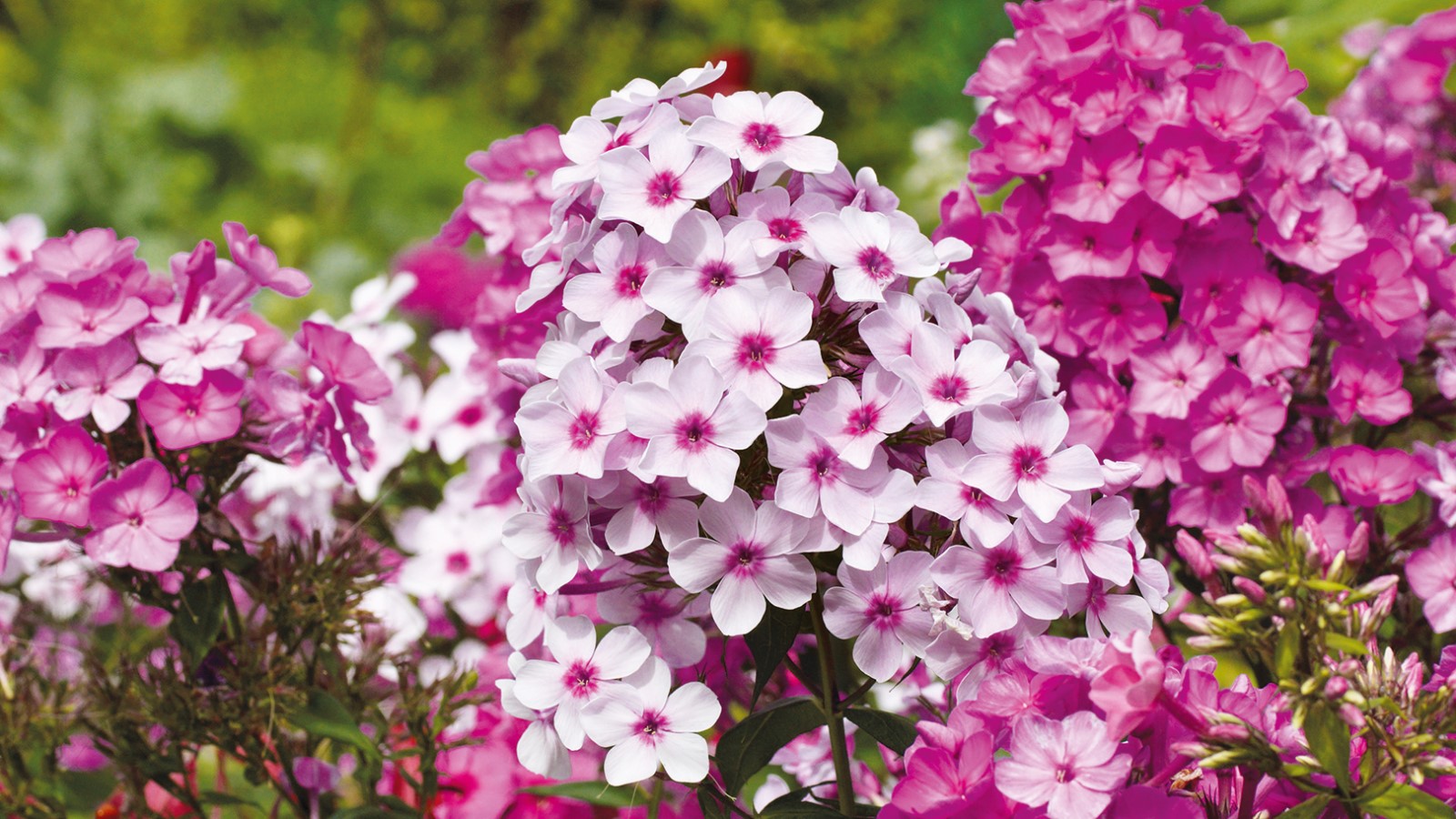

Phlox are easy-to-grow plants that come in a huge variety of colors to provide a bounty of fragrant flowers throughout the summer months. They require only a little annual maintenance to perform at their best year after year, which includes deciding when to cut back phlox each year.
There are many species of phlox to choose from. There are tall border perennial forms that are great for flower bed ideas and do need cutting back annually after flowering – this can be done either in fall or spring. There are also creeping types of phlox that also do need cutting back, but this is done in summer straight after flowering.
When it comes to when to cut back phlox, there are pros and cons for deciding between whether to cut them back once the foliage has died back in late fall, or before the new growth emerges in spring. We take a look at the reasons you may adopt either approach.
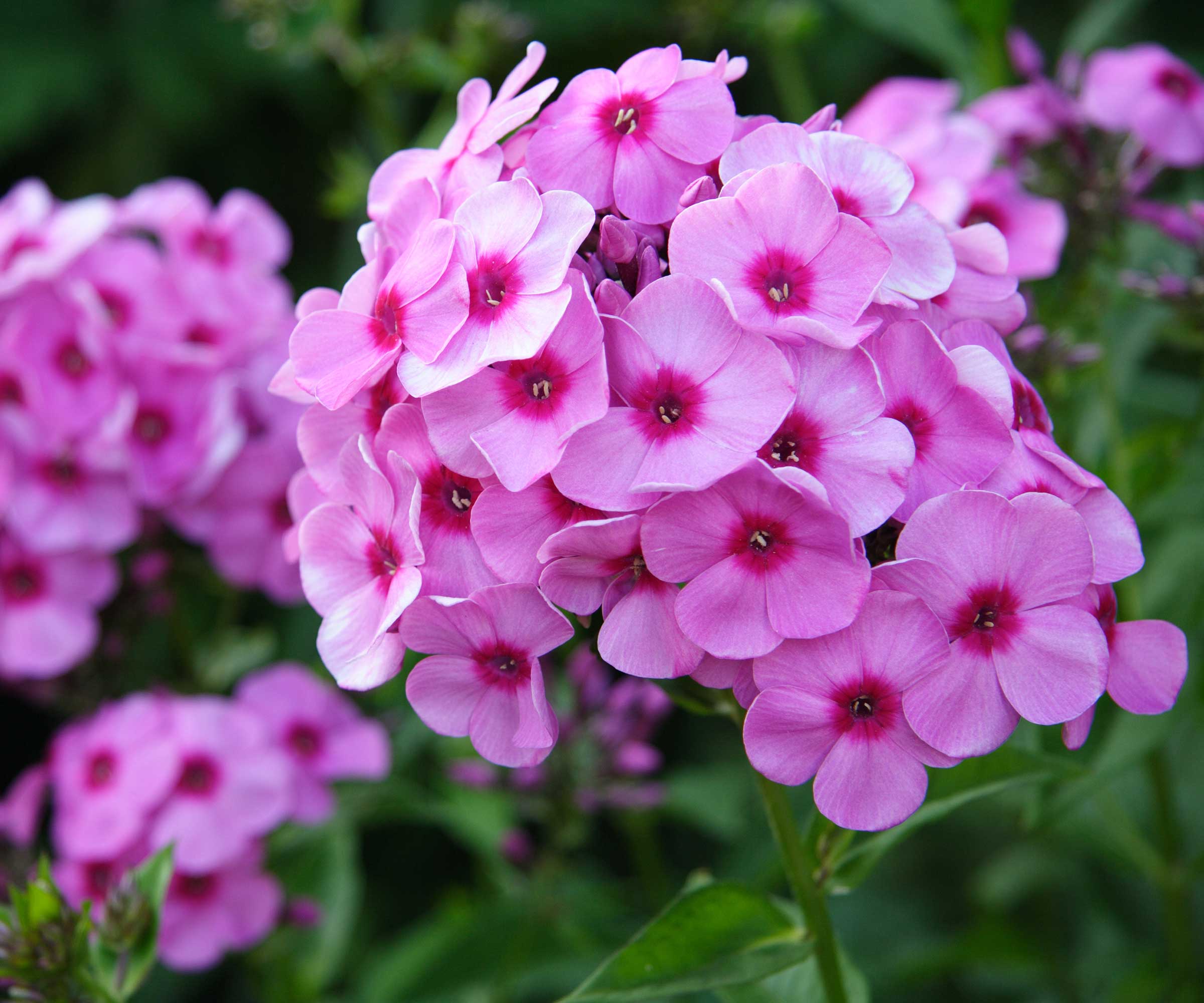
Phlox flowers are packed together in panicles
Do you cut back phlox in the fall?
Phlox are fantastic additions to any flower bed or herbaceous border. They are always great cottage garden plants to help get that classic English look into your backyard ideas. Grow border phloxes in full sun and they will reward you with a plethora of blooms throughout the summer months. Make sure to deadhead phlox regularly to get the longest blooming season possible and keep them well watered during dry spells.
At the end of the flowering season, the time comes to cut the plants down. This is a task commonly done in fall or winter, making sure to wait till the foliage has died back as cutting too early will mean you miss out on flowers.
Amy Enfield, senior horticulturist at ScottsMiracle-Gro, recommends waiting until after a frost has blackened the leaves and stems before heading out with the pruning shears to cut back phlox for winter.
‘The main reason for cutting back garden phlox in the fall is that plants are very susceptible to powdery mildew. Pruning back the branches in fall and removing them from your garden beds is important in the prevention and control of the disease,’ says Amy.
‘The plants are most prone to powdery mildew during the cool, wet fall months. The risk of a late season powdery mildew outbreak far outweighs any reason to wait until spring to cut back garden phlox.’
It is important that any plant material that shows signs of powdery mildew is not used to make compost, and any garden tools are cleaned and disinfected after cutting back a plant with the fungal disease.
As well as combating powdery mildew, there are two other prime reasons for choosing to cut back phlox in the fall. One is the fact it helps as part of tidying and neatening the yard - which may be high on your fall gardening checklist - and also it can help eliminate the risk of garden pests overwintering in the spent foliage.

Amy has over 25 years of experience in the Lawn & Garden industry and has been with ScottsMiracle-Gro for 11 years. She has a BS and MS in Horticulture from Michigan State University and a PhD in Plant & Environmental Sciences from Clemson University.
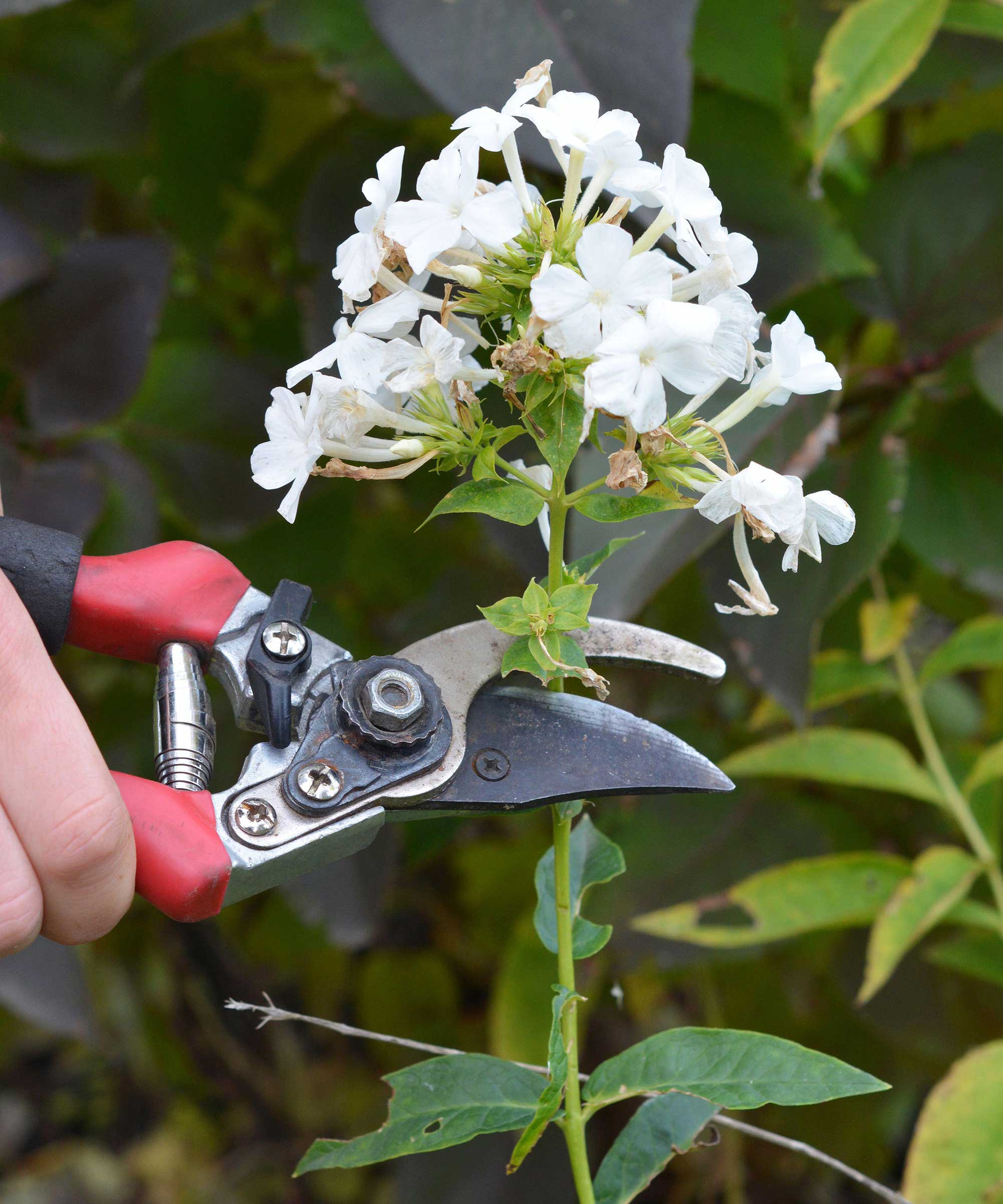
Phlox benefit from being deadheaded throughout the season
Can you cut back phlox in the spring?
You can choose to prune back phlox in early spring, rather than cutting the plant back for winter. If you adopted this approach, the correct time to head out with the garden shears would be in early spring as new growth starts to emerge for the season.
If you aspire to have a wildlife garden that is designed to benefit the local wildlife throughout the year, then leaving phlox in place over winter can help with these ambitions. Jane Hart from Flora Queen adds: ‘Leaving phlox standing through winter provides food and shelter for birds and beneficial insects during the colder months.’
Jane also says: ‘The dried seed heads of phlox can also add visual interest to your winter garden, particularly when dusted with frost or snow.’
Whether you cut back phlox in fall or spring could not only depend on your type of garden, but also your US hardiness zone. It is important to choose the approach that fits with both your climate and the goals for your garden. Areas with milder winters may benefit more from phlox being left until spring and, if you live in an area that gets late spring frosts, the uncut foliage can protect the new growth from frost damage.
Jane is an expert from the international flower company Flora Queen. The company began sending flowers online in 2004 from its headquarters in Barcelona – but in the last 15 years, they have grown into an internationally recognized business that sends flowers to more than 100 countries around the world.
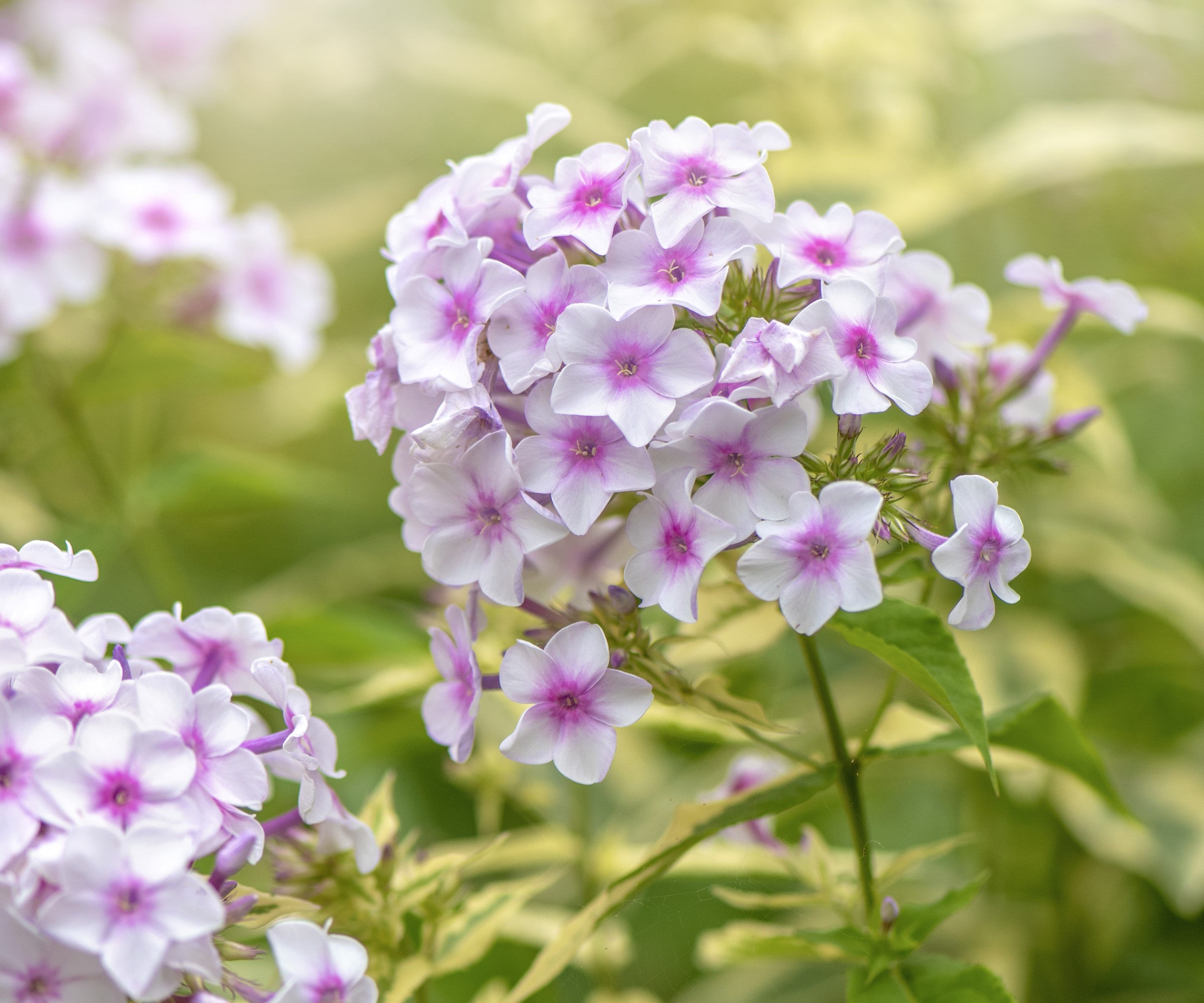
Phlox start putting out new growth in spring each year
How to cut back phlox
Always use clean and sharp pruning shears before cutting back plants to avoid spreading disease around the garden. This is especially important if the plant shows any signs of powdery mildew, which you do not want to transfer to other plants. Sterilizing your tools can prevent this happening and you can clean tools with disinfecting wipes, such as these available at Amazon.
Simply cut back all of the stems to around 2-3 inches from the ground. It may seem drastic, however phlox are perennial plants that annually die back each winter and then will start growing again come next spring. Cutting back the plant is highly beneficial to its overall health and an important part of its care routine.
Remember to not add the removed trimmings to your compost pile as the plants are highly susceptible to fungal problems.
Fiskars Bypass Pruning Shears | Available at Amazon
Steel blade plant shears that are ideal for cutting back herbaceous plants, such as phlox. These pruning shears can cut stems and small branches up to 5/8 inch thick
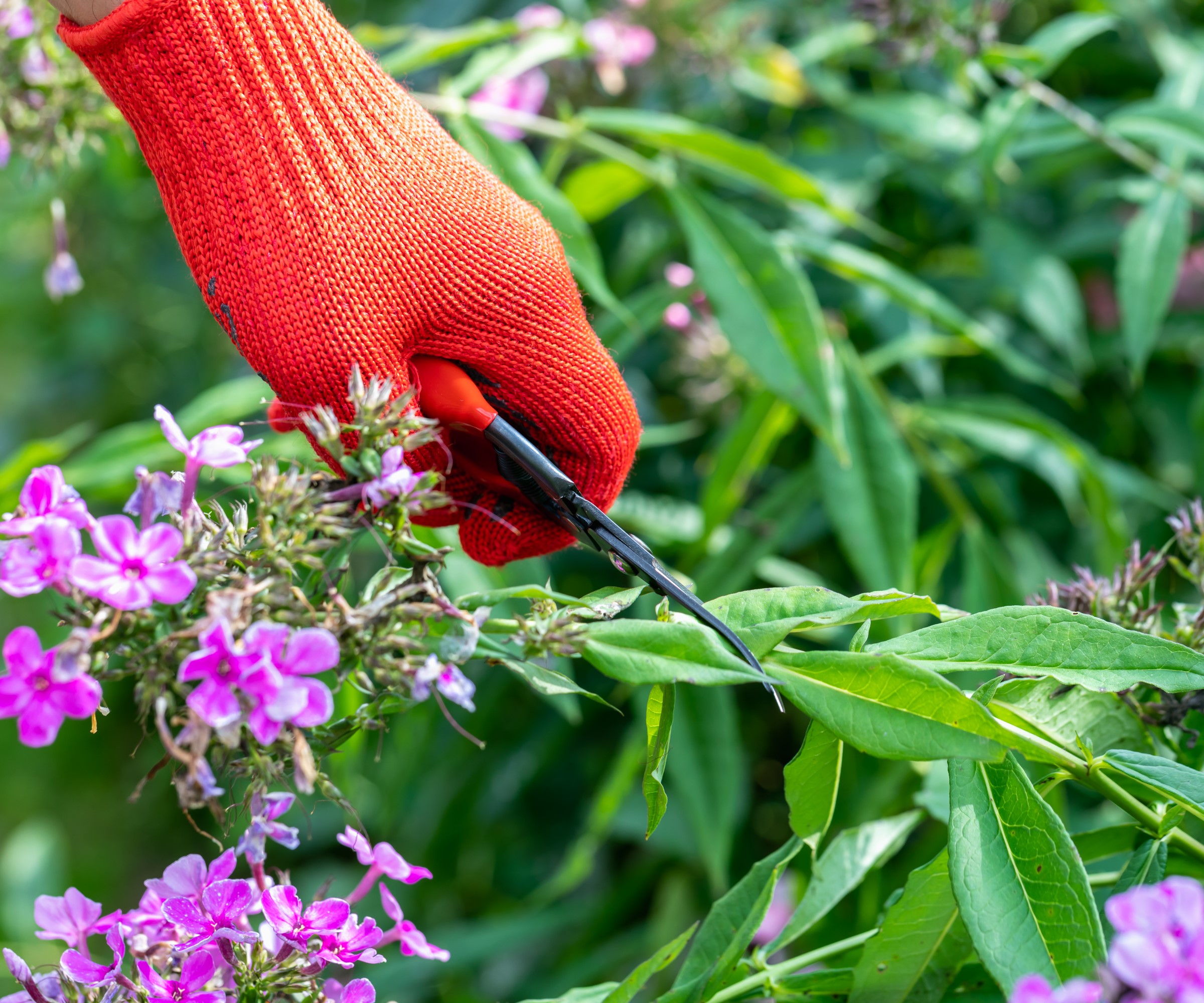
Phlox stems should be cut back to the ground annually
How and when to cut back creeping phlox
Creeping species of phlox are different to the usual tall border types. Both types of phlox do need cutting once a year, but the timing and method is different. Creeping phlox should be cut back directly after flowering in the middle of the summer. These types of phlox are not as susceptible to powdery mildew and these pretty evergreen plants are pruned annually only for cosmetic purposes to control the size and shape of the plant.
FAQs
Will phlox come back every year?
Phlox are herbaceous perennials that are simple to grow and maintain. That means they will come back year-after-year to provide you with a fantastic show of blooms come summer. They are great at attracting butterflies and other pollinators into the garden and need only a little annual maintenance. They are fairly drought-tolerant so don't need lots of watering, benefit from a mulching each spring, and want to be kept weed free. Apart from that, just deadhead throughout the season and annually cut back the stems to ensure the plants keep performing every year.
Should I cut back phlox after flowering?
It is definitely recommended to cut back phlox after the end of their flowering season to benefit the health of the plant. Phlox are susceptible to powdery mildew, which is capable of overwintering and releasing spores come spring. Heavily infected plants can have their photosynthesis impaired, which can cause leaf drop and other issues. Removing old foliage is beneficial to the overall health and productivity of the plant.
Phlox are highly reliable plants that will grow over time to form large clumps. It can be advantageous to divide plants every few years to stop these clumps getting too congested. This also has the advantage of creating new clumps of phlox that you can plant elsewhere in your backyard.
Sign up to the Homes & Gardens newsletter
Design expertise in your inbox – from inspiring decorating ideas and beautiful celebrity homes to practical gardening advice and shopping round-ups.

Drew’s passion for gardening started with growing vegetables and salad in raised beds in a small urban terrace garden. He has worked as a professional gardener in historic gardens and specialises in growing vegetables, fruit, herbs, and cut flowers as a kitchen gardener. That passion for growing extends to being an allotmenteer, garden blogger, and producing how-to gardening guides for websites. Drew was shortlisted for the New Talent of the Year award at the 2023 Garden Media Guild Awards.
-
 Step inside this British stately kitchen that's steeped in country charm – a kitchen built for now, with the soul of another era
Step inside this British stately kitchen that's steeped in country charm – a kitchen built for now, with the soul of another eraBritish kitchen designers Guild Anderson reimagined the layout of this characterful kitchen, crafting a bespoke kitchen design that honours the heritage and enduring charm of this historic Cornish home
By Caroline Moratti
-
 How to arrange flowers like a professional – these 5 rules are all you need according to floral experts
How to arrange flowers like a professional – these 5 rules are all you need according to floral expertsWe asked floral experts for their advice on arranging flowers, whatever the season – create stunning floral displays all year round with these rules
By Katrina Harper-Lewis
